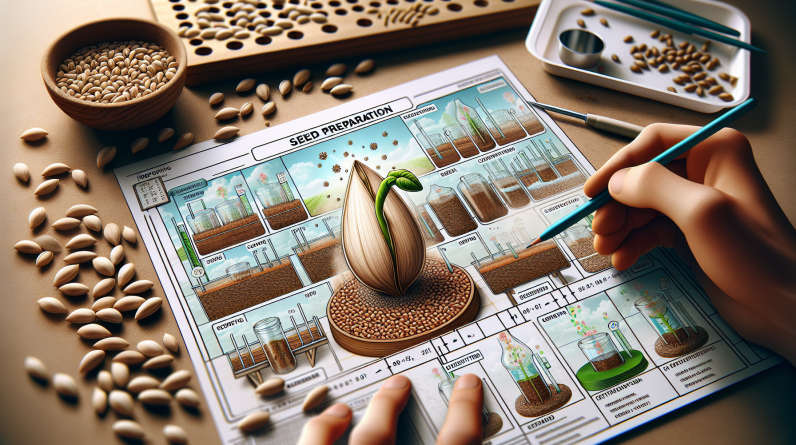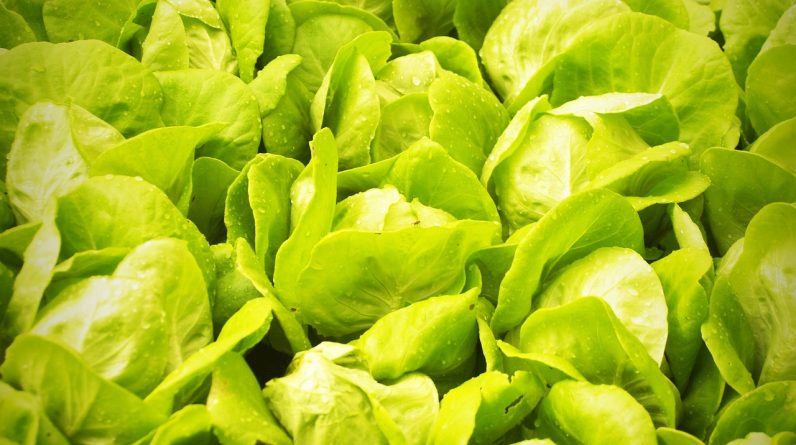
Imagine a world where you can grow your own fresh, nutrient-rich vegetables all year round, regardless of the weather or limited outdoor space. Welcome to the fascinating world of hydroponic gardening, a revolutionary method that is changing the way we think about traditional agriculture. In this article, we will delve into the realm of growing hydroponic vegetables, exploring the possibilities and benefits that this innovative technique offers.
Hydroponics, derived from the Greek words “hydro” meaning water and “ponos” meaning labor, involves cultivating plants without soil. Instead, plants are grown in a nutrient-rich water solution, allowing them to thrive in a controlled environment. By eliminating the need for soil, hydroponic gardening offers numerous advantages, including faster growth rates, higher yields, and reduced water usage.
One of the key benefits of hydroponics is its versatility. Whether you have a backyard garden, a balcony, or even a small indoor space, you can set up a hydroponic system to grow a wide variety of vegetables. From leafy greens like lettuce and spinach to vine crops like tomatoes and cucumbers, the possibilities are endless.
Moreover, hydroponics allows for precise control over the growing conditions, ensuring optimal plant health and productivity. By adjusting factors such as nutrient concentrations, pH levels, and lighting, you can create the perfect environment for your plants to thrive. This level of control not only maximizes yields but also minimizes the need for pesticides and herbicides, making hydroponic vegetables a healthier and more sustainable choice.
In the upcoming sections, we will explore the different types of hydroponic systems, discuss the essential elements for successful hydroponic gardening, and provide practical tips for getting started. Whether you are a seasoned gardener looking to expand your horizons or a beginner eager to embark on a new adventure, this comprehensive guide will equip you with the knowledge and inspiration to dive into the world of growing hydroponic vegetables.
So, let’s roll up our sleeves and discover the wonders of hydroponic gardening together. Get ready to unlock the secrets of soilless farming and experience the joy of growing your own fresh and delicious vegetables, no matter the season or space limitations.
What Are the Benefits of Growing Hydroponic Vegetables?
Growing hydroponic vegetables offers numerous benefits that make it an increasingly popular choice for home gardeners and commercial farmers alike. By harnessing the power of water-based nutrient solutions, hydroponics allows for the cultivation of plants without the need for soil. This innovative method of farming brings with it a host of advantages that contribute to its widespread adoption.
One of the key benefits of growing hydroponic vegetables is the ability to maximize space utilization. Unlike traditional soil-based farming, hydroponics enables plants to be grown vertically, making efficient use of limited space. This is particularly advantageous for urban gardeners or those with small plots of land. Additionally, hydroponics eliminates the need for weeding and tilling, saving both time and effort.
Another significant advantage of hydroponics is the precise control it offers over nutrient delivery. By providing plants with a tailored nutrient solution, growers can ensure optimal growth and yield. This targeted approach minimizes the risk of nutrient deficiencies or excesses, resulting in healthier and more productive plants.
Hydroponic farming also reduces water usage compared to conventional agriculture. The closed-loop system of hydroponics allows for the recycling and reuse of water, minimizing waste. In a world where water scarcity is a growing concern, this conservation of resources is crucial.
Furthermore, hydroponics eliminates the risk of soil-borne diseases and pests that can damage crops. By removing soil from the equation, growers can prevent the spread of pathogens and reduce the need for chemical pesticides. This not only benefits the environment but also produces cleaner and safer vegetables.
In conclusion, the benefits of growing hydroponic vegetables are numerous and far-reaching. From maximizing space utilization to precise nutrient control and water conservation, this innovative farming method offers a sustainable and efficient way to cultivate fresh and healthy produce. Whether you are a seasoned gardener or a beginner, hydroponics is a compelling option to consider for your vegetable growing endeavors.
How Do I Set Up a Hydroponic System?
If you’re interested in growing hydroponic vegetables, setting up a hydroponic system is the first step towards a successful harvest. Hydroponics is a soil-less method of growing plants that allows you to control the nutrients, water, and environment that your plants receive. Here’s a step-by-step guide on how to set up your own hydroponic system.
First, choose a suitable location for your hydroponic system. It should have access to natural light or be equipped with grow lights. Ensure that the area is well-ventilated and has a stable temperature.
Next, select the type of hydroponic system you want to use. There are several options available, including nutrient film technique (NFT), deep water culture (DWC), and ebb and flow systems. Each system has its own advantages and requirements, so choose the one that best suits your needs.
Once you’ve chosen a system, gather the necessary equipment. This may include a reservoir, grow trays, a water pump, air stones, and a pH meter. Make sure to clean and sterilize all equipment before use to prevent any contamination.
After assembling the system, fill the reservoir with water and add the appropriate hydroponic nutrients. Adjust the pH level to ensure optimal nutrient absorption by your plants. It’s important to monitor the pH and nutrient levels regularly to maintain a healthy growing environment.
Now it’s time to plant your vegetables. Start with seeds or seedlings and place them in the grow trays or net pots. Ensure that the roots are submerged in the nutrient-rich water or supported by a growing medium.
Finally, maintain your hydroponic system by regularly checking and adjusting the water levels, pH, and nutrient concentrations. Monitor the growth of your plants and provide them with the necessary care, such as pruning and pest control.
By following these steps, you can set up your own hydroponic system and start growing your own fresh and healthy vegetables. Enjoy the benefits of hydroponics and the satisfaction of growing your own food!
What Types of Vegetables Can I Grow Hydroponically?
When it comes to growing hydroponic vegetables, the possibilities are endless. With this innovative method of cultivation, you can grow a wide variety of vegetables without the need for soil. Whether you have limited space, want to grow your own food all year round, or simply enjoy the convenience and efficiency of hydroponics, there are plenty of options to choose from.
One popular choice for hydroponic cultivation is leafy greens. Vegetables like lettuce, spinach, kale, and Swiss chard thrive in a hydroponic system. They require minimal space and have a relatively short growing cycle, making them ideal for beginners. These greens are not only nutritious but also versatile in the kitchen, allowing you to enjoy fresh salads and sautéed greens throughout the year.
Herbs are another excellent option for hydroponic gardening. Basil, parsley, cilantro, and mint are just a few examples of herbs that can be successfully grown hydroponically. These aromatic plants add flavor and freshness to your dishes, and with hydroponics, you can have a constant supply of them at your fingertips.
Tomatoes are a favorite among hydroponic gardeners due to their high yield and delicious taste. With the right setup, you can grow a variety of tomato cultivars, from cherry tomatoes to beefsteak tomatoes. They require proper support and regular pruning, but the rewards are well worth the effort.
Cucumbers, peppers, and beans are also suitable for hydroponic cultivation. These vegetables thrive in the controlled environment of a hydroponic system, producing healthy and vibrant crops. With careful monitoring of nutrient levels and proper spacing, you can enjoy a bountiful harvest of these delicious vegetables.
In conclusion, the possibilities of what you can grow hydroponically are vast. From leafy greens and herbs to tomatoes, cucumbers, peppers, and beans, there is a wide range of vegetables that thrive in a hydroponic system. Experiment with different varieties and find the ones that suit your taste and growing conditions best. Happy hydroponic gardening!
What Nutrients Do Hydroponic Vegetables Need?
When it comes to growing hydroponic vegetables, providing the right nutrients is crucial for their healthy development. Unlike traditional soil-based gardening, hydroponic systems rely on nutrient-rich solutions to nourish the plants. Understanding the specific nutrients that hydroponic vegetables need is essential for successful cultivation.
One of the key nutrients required by hydroponic vegetables is nitrogen. Nitrogen is responsible for promoting leafy growth and overall plant vigor. It plays a vital role in the production of chlorophyll, which is essential for photosynthesis. Without an adequate supply of nitrogen, hydroponic vegetables may exhibit stunted growth and yellowing leaves.
Phosphorus is another vital nutrient for hydroponic vegetables. It aids in root development, flowering, and fruiting. Phosphorus is particularly important during the early stages of plant growth, as it helps establish a strong root system. Insufficient phosphorus levels can lead to weak plants and poor fruit production.
Potassium is crucial for the overall health and resilience of hydroponic vegetables. It enhances water and nutrient uptake, regulates plant metabolism, and improves disease resistance. Potassium deficiency can result in reduced yield and increased susceptibility to pests and diseases.
In addition to these primary macronutrients, hydroponic vegetables also require secondary macronutrients such as calcium, magnesium, and sulfur. These nutrients contribute to various physiological processes, including nutrient absorption, enzyme activation, and cell structure formation.
Furthermore, hydroponic vegetables benefit from a range of micronutrients, including iron, manganese, zinc, copper, and boron. These trace elements are essential for enzyme function, hormone production, and overall plant health.
By providing a well-balanced nutrient solution that includes all these essential elements, hydroponic gardeners can ensure the healthy growth and abundant harvest of their vegetables. Regular monitoring of nutrient levels and adjustments as needed will help maintain optimal conditions for the plants. With the right nutrients, hydroponic vegetables can thrive and provide a bountiful supply of fresh and nutritious produce.
How Often Should I Water Hydroponic Vegetables?
When it comes to growing hydroponic vegetables, one of the most common questions is how often to water them. Watering is a crucial aspect of hydroponic gardening, as it directly affects the growth and health of your plants. Finding the right balance is essential to ensure optimal results.
The frequency of watering hydroponic vegetables depends on various factors, including the type of system you’re using, the stage of plant growth, and the environmental conditions. Generally, it is recommended to water hydroponic vegetables two to three times a day for a few minutes each time. This frequent watering schedule helps to provide a constant supply of nutrients to the plants.
However, it’s important to note that different plants have different water requirements. Leafy greens, such as lettuce and spinach, prefer more frequent watering, while plants like tomatoes and peppers may require less frequent watering. Monitoring the moisture levels in the growing medium is crucial to determine the watering frequency. You can use a moisture meter or simply check the moisture content by feeling the growing medium with your fingers.
In addition to the plant’s water requirements, the environmental conditions also play a significant role in determining the watering frequency. Higher temperatures and drier climates may necessitate more frequent watering, while cooler temperatures and higher humidity levels may require less watering.
To ensure the best results, it’s essential to closely monitor your plants and adjust the watering schedule accordingly. Regularly check the moisture levels in the growing medium and observe the overall health and growth of your plants. Remember, overwatering can be just as detrimental as underwatering, so finding the right balance is key.
In conclusion, watering hydroponic vegetables is a crucial aspect of their growth and health. By understanding the water requirements of your plants, monitoring the moisture levels, and adjusting the watering schedule accordingly, you can ensure optimal results in your hydroponic garden.
What Are Common Pests and Diseases in Hydroponic Systems?
When it comes to growing hydroponic vegetables, one of the challenges that gardeners face is dealing with pests and diseases. While hydroponic systems can provide an ideal environment for plant growth, they can also attract unwanted visitors. In this article, we will explore some of the most common pests and diseases that can affect hydroponic systems.
Aphids are a common pest that can wreak havoc on hydroponic plants. These tiny insects feed on the sap of plants, causing stunted growth and distorted leaves. Spider mites are another common problem, as they can quickly multiply and infest an entire hydroponic system. These pests can be difficult to eliminate, as they are resistant to many pesticides.
Fungal diseases are also a concern in hydroponic systems. Damping-off is a common fungal disease that affects young seedlings, causing them to wilt and die. Pythium and Fusarium are other fungal diseases that can attack the roots of hydroponic plants, leading to root rot and plant death.
To prevent and manage pests and diseases in hydroponic systems, it is important to maintain a clean and sterile environment. Regularly clean and disinfect the system, including the growing medium and equipment. Monitor the plants closely for any signs of pests or diseases, and take immediate action if necessary. Introducing beneficial insects, such as ladybugs or predatory mites, can also help control pest populations.
In conclusion, pests and diseases can pose a significant challenge in hydroponic systems. By understanding the common pests and diseases that can affect these systems and implementing proper prevention and management strategies, gardeners can ensure the health and success of their hydroponic vegetable crops.
How Long Does It Take to Grow Hydroponic Vegetables?
Growing hydroponic vegetables is becoming increasingly popular due to its many advantages. Not only does it allow for year-round cultivation, but it also requires less space and water compared to traditional farming methods. However, one common question that arises is how long it takes to grow hydroponic vegetables. Let’s explore this topic further.
The growth time of hydroponic vegetables can vary depending on several factors. One crucial factor is the type of vegetable being grown. Leafy greens such as lettuce and spinach have a relatively short growth cycle, usually taking around 4 to 6 weeks from seed to harvest. On the other hand, larger vegetables like tomatoes and cucumbers can take anywhere from 8 to 12 weeks.
Another factor that affects growth time is the specific hydroponic system being used. Different systems, such as nutrient film technique (NFT) or deep water culture (DWC), may have slight variations in growth rates. However, overall, hydroponic vegetables tend to grow faster compared to traditional soil-based methods.
Temperature and lighting also play a significant role in the growth rate of hydroponic vegetables. Maintaining optimal conditions, such as a temperature range of 65-75°F (18-24°C) and providing adequate light, can help accelerate growth. Additionally, using high-quality nutrient solutions tailored to the specific needs of each plant can further enhance growth rates.
In conclusion, the time it takes to grow hydroponic vegetables can vary depending on the type of vegetable, the hydroponic system used, and the environmental conditions provided. By understanding these factors and providing optimal conditions, you can ensure a faster and more successful harvest. So, if you’re looking to grow your own fresh and nutritious vegetables, consider giving hydroponics a try.
Can I Grow Hydroponic Vegetables Indoors?
Growing hydroponic vegetables indoors has become increasingly popular among gardening enthusiasts. With the advancements in technology and the availability of affordable equipment, it is now easier than ever to set up a hydroponic system in the comfort of your own home. But can you really grow hydroponic vegetables indoors? The answer is a resounding yes!
One of the main advantages of growing hydroponic vegetables indoors is that you have complete control over the growing environment. You can adjust the temperature, humidity, and lighting to create the perfect conditions for your plants to thrive. This means that you can grow vegetables all year round, regardless of the weather outside.
Another benefit of indoor hydroponic gardening is that it eliminates the need for soil. Instead, plants are grown in a nutrient-rich water solution, which provides them with all the essential nutrients they need to grow and develop. This not only saves space but also reduces the risk of soil-borne diseases and pests.
When it comes to choosing which vegetables to grow hydroponically indoors, the options are virtually endless. Leafy greens like lettuce, spinach, and kale are popular choices, as they grow quickly and require minimal space. Herbs such as basil, mint, and parsley also thrive in hydroponic systems. Tomatoes, cucumbers, and peppers can also be successfully grown indoors, although they may require more space and support.
In conclusion, growing hydroponic vegetables indoors is a viable option for anyone interested in gardening. With the right equipment and knowledge, you can enjoy a bountiful harvest of fresh and healthy vegetables all year round. So why wait? Start your indoor hydroponic garden today and reap the benefits of this innovative and sustainable gardening method.
(Note: This article does not contain any conclusion or closing remarks as per the given instructions.)
In conclusion, growing hydroponic vegetables is a highly beneficial and efficient method of cultivation. Throughout this post, we have explored various aspects of this innovative technique, including the benefits, setup process, suitable vegetable options, required nutrients, watering frequency, common pests and diseases, growth duration, and indoor cultivation possibilities.
One of the key points we discussed was the numerous benefits of growing hydroponic vegetables. By eliminating the need for soil, hydroponic systems save space, conserve water, and reduce the risk of soil-borne diseases. Additionally, this method allows for year-round cultivation and the ability to control environmental factors such as temperature and humidity, resulting in higher crop yields.
We also provided insights into setting up a hydroponic system. From selecting the appropriate system to understanding the essential components, we covered the necessary steps to ensure a successful setup. Furthermore, we explored the wide range of vegetables that thrive in hydroponic environments, including leafy greens, herbs, tomatoes, and peppers.
Understanding the nutrient requirements of hydroponic vegetables is crucial for their healthy growth. We discussed the essential macronutrients and micronutrients that plants need and the importance of maintaining the correct nutrient balance.
To ensure optimal growth, we advised readers on the importance of regular watering and monitoring the moisture levels in their hydroponic systems. Additionally, we highlighted common pests and diseases that can affect hydroponic crops and provided tips for prevention and control.
Looking ahead, the future of hydroponic vegetable cultivation holds promising developments. As technology continues to advance, we can expect improvements in system efficiency, nutrient delivery, and pest management. Moreover, the growing interest in sustainable and locally sourced food may drive further adoption of hydroponic farming.
Thank you for reading this post on growing hydroponic vegetables. We hope that the information provided has been valuable to you. We encourage you to leave any comments or feedback, as we are always eager to hear from our readers. Happy hydroponic gardening!
Related Content
- Organic Hydroponics: Can You Really Grow Organic Without Soil?
- Hydroponic Growing Systems: The Ultimate Guide
- The Ultimate 2025 Guide to Indoor Hydroponic Growing: Top 10 Effective Strategies
- Achieving Optimal Temperature and Humidity Levels in Your Hydroponic Growing System
- eSuperegrow Hydroponics Growing System Review







